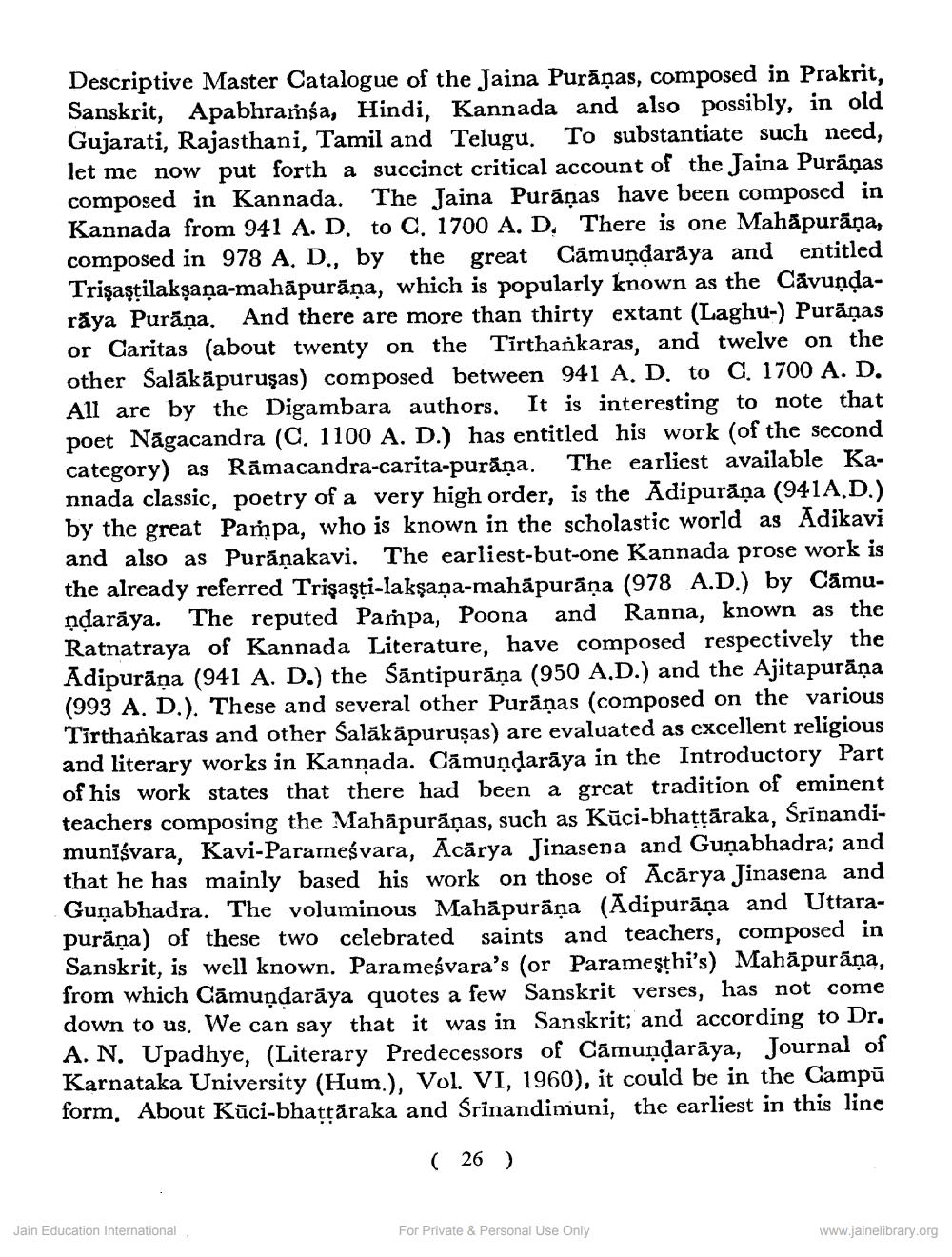________________
Descriptive Master Catalogue of the Jaina Purāņas, composed in Prakrit, Sanskrit, Apabhramsa, Hindi, Kannada and also possibly, in old Gujarati, Rajasthani, Tamil and Telugu. To substantiate such need, let me now put forth a succinct critical account of the Jaina Purāņas composed in Kannada The Jaina Purānas have been composed in Kannada from 941 A. D. to C. 1700 A. D. There is one Mahāpurāņa, composed in 978 A. D., by the great Cámundarāya and entitled Trişaștilakşaņa-mahāpurāņa, which is popularly known as the Cāvundarāya Purāņa. And there are more than thirty extant (Laghu-) Purāņas or Caritas (about twenty on the Tīrthankaras, and twelve on the other Salākāpuruşas) composed between 941 A. D. to C. 1700 A. D. All are by the Digambara authors. It is interesting to note that poet Nāgacandra (C. 1100 A. D.) has entitled his work (of the second category) as Rāmacandra-carita-purāņa. The earliest available Kannada classic, poetry of a very high order, is the Adipurāņa (941A.D.)
the great Pampa, who is known in the scholastic world as Adikavi and also as Puránakavi. The earliest-but-one Kannada prose work is the already referred Trişaşti-lakşaņa-mahāpurāņa (978 A.D.) by Camundarāya. The reputed Papa, Poona and Ranna, known as the Ratnatraya of Kannada Literature, have composed respectively the Adipurāņa (941 A. D.) the Sāntipurāņa (950 A.D.) and the Ajitapurāņa (993 A. D.). These and several other Puranas (composed on the various Tirtharkaras and other Salākāpurusas) are evaluated as excellent religious and literary works in Kannada. Cāmundarāya in the Introductory Part of his work states that there had been a great tradition of eminent teachers composing the Mahāpurāņas, such as Kūci-bhattāraka, Srīnandimunīśvara, Kavi-Parameśvara, Ācārya Jinasena and Guņabhadra; and that he has mainly based his work on those of Acārya Jinasena and Guņabhadra. The voluminous Mahāpurāņa (Adipurāņa and Uttarapurāna) of these two celebrated saints and teachers. composed Sanskrit, is well known. Parameśvara's (or Parameşthi's) Mahapurāna, from which Cāmundarāya quotes a few Sanskrit verses, has not come down to us. We can say that it was in Sanskrit; and according to Dr. A. N. Upadhye, (Literary Predecessors of Cāmundarāya, Journal of Karnataka University (Hum.), Vol. VI, 1960), it could be in the Campū form. About Kūci-bhattāraka and Srīnandimuni, the earliest in this line
( 26
)
Jain Education International,
For Private & Personal Use Only
www.jainelibrary.org




